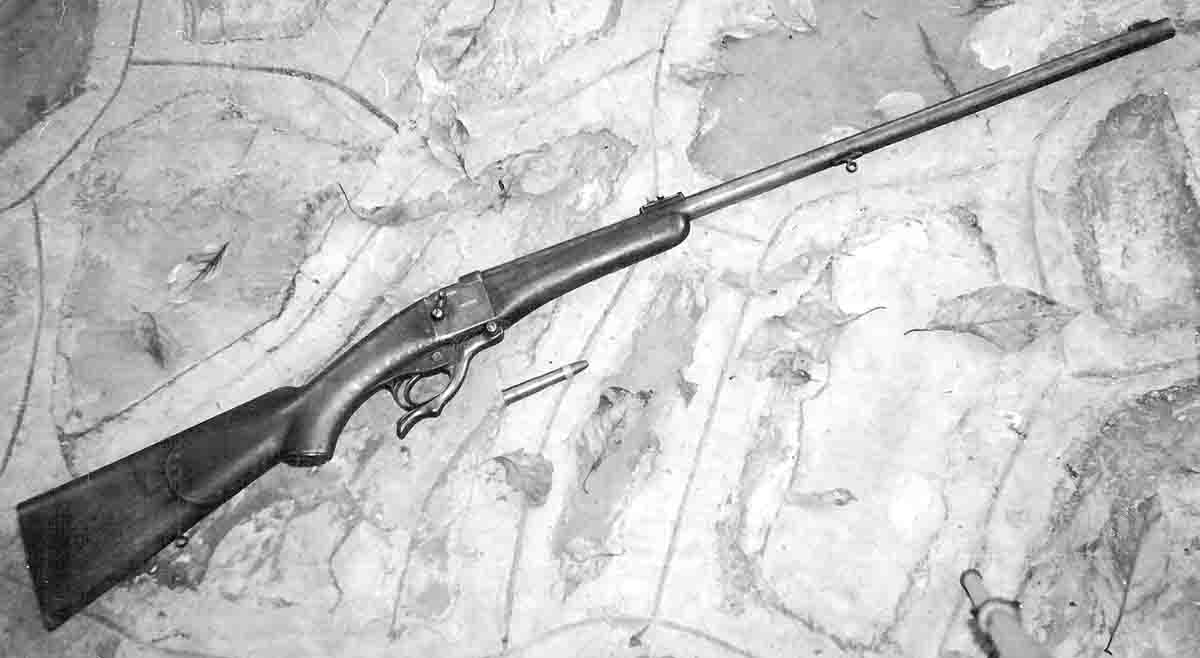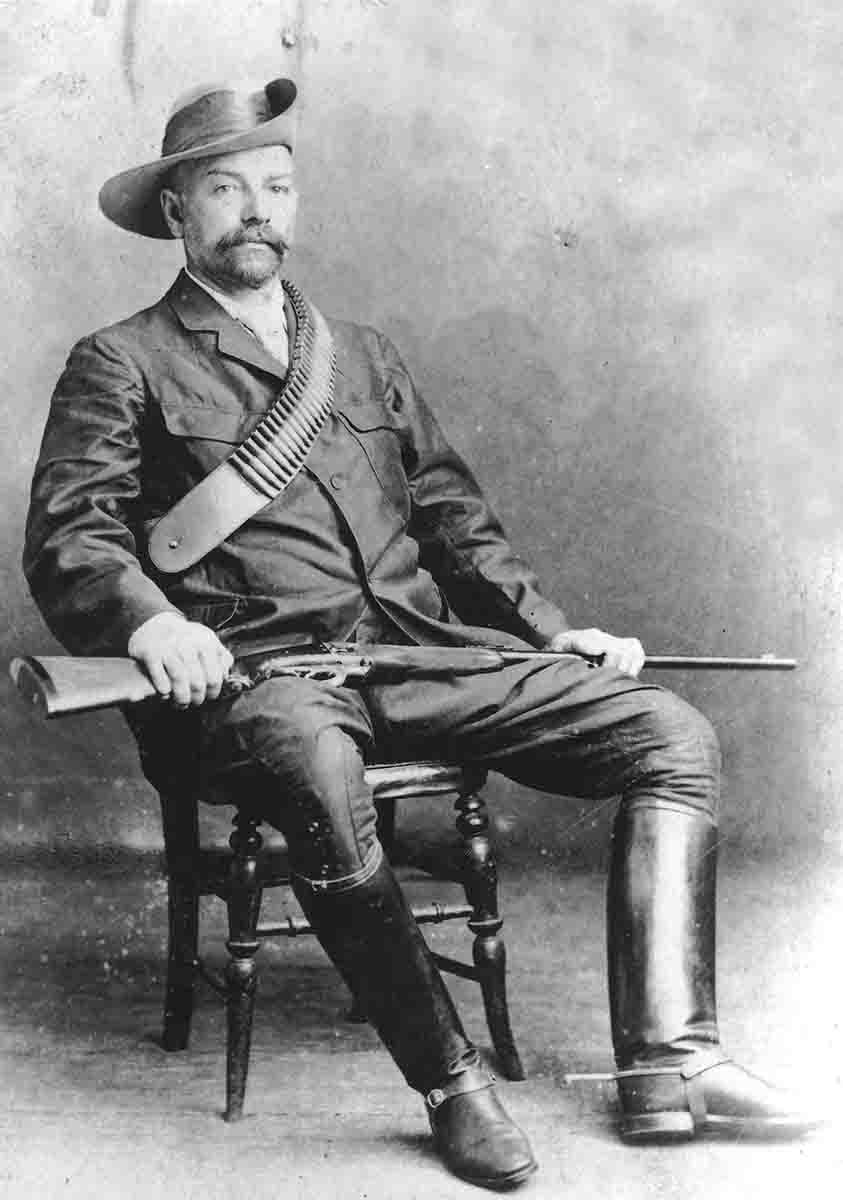Single Shots in Africa
From War to Hunting the Largest Game
other By: Ganyana | January, 26

Early European settlers had little interest in hunting. They traded for cattle and raised crops to supply ships going to the East Indies. In 1595 Portugal invaded the Kingdom of the Monomotapa, following the murder of a Jesuit priest. The country also possessed a vast wealth in gold. The Portuguese had only 50 men with matchlocks (Harquebus), four small cannon and 200 crossbow men. The kingdom moved north, but a Monomotapa was still a Portuguese citizen (and educated in Genoa by the Jesuits) until 1974. Portugal maintained soldiers in what is now Zimbabwe until 1836.


The Dutch settled in Cape Town in 1652 as a supply station for ships sailing to the Indies. Farmers were brought in, but it was mainly a trading post and a fort with relatively little hunting, at least initially. Meat was obtained by trade with the Khoikhois. By 1750, however, the Dutch colonists were growing in number and were thoroughly fed up with the Cape government and moving further afield. This, of course, brought them into conflict, first with the Khoikhois – who were Stone Age pastoralists and easily beaten by men on horses with guns. From the north, though, came the great migration of the Bantu peoples, who grew crops, kept livestock, had iron spears and came in thousands.
The great Fish River was the border between the Dutch pushing north and the Xosa (second largest tribe in South Africa) pushing south. When Britain took over the Cape as a temporary measure, the Dutch where losing against Napoleon and the French, and the British simply wished to deny Napoleon’s navy a base. In 1814 though, they formally annexed the whole colony and found they had inherited a major war – and far more than local militia could cope with. So regular troops were sent out. The Xosa were slaughtered and left a whole array of British officers on the lookout for ‘sport.’ The border war had been vicious and bloody before the English joined in the 4th Frontier War. So they built a line of forts and allocated the abandoned Dutch farms to predominately Scottish and Welsh farmers, who wanted a chance to better themselves.
The next of nine Frontier Wars was probably a case of Xosa beef tasting better than British beef, and raids exploded into war bringing fresh troops from England. By then percussion caps and rifles were pretty common and certainly widely used by the officers and the first intrepid explorers who set off to explore the interior. Then the Dutch decided on a mass emigration away from British control, and thousands of them moved north into what is now the Orange Free State and Transvaal. The Boers, as they became known, favored large-caliber shotguns; galloping close to their prey on horseback brought it down with a blast of buckshot. There was no shortage of game and – as the area had largely been denuded of all human habitation for some years due to the Mfecane (a period of intense internecine strife) – the game was easy to hunt.
From 1840 to 1880 was the period of the great explorers, and although cartridge guns were available after 1860, and carried by most, a smoothbore flintlock of about 4-bore was the standard elephant gun until the 1890s, and percussion rifles or rifles with interchangeable flint and percussion locks were for everyday use. These convertible rifles found considerable favor with those living on the frontier until the 1890s, when widespread war reshaped the continent’s armaments.

My family was the Westley Richards agent (and later Alexander Henry and Colt) and sold 18,000 convertible rifles and 2,000 pistols between 1834 and 1838 and also some 6,000 of the large “fighting guns” – 6- through 4-bore shotguns – favored by the Boers. These continued in demand until 1882.

Still the great hunters who stocked the world’s museums with African game – Sir William Harris, Roualeyn Cumming (although he was a little eccentric and always hunted in a kilt and preferred his sword for lion), William Oswell, James Chapman, Frederick Selous, Parker Gilmour and Victor Pohl – all relied on single-shot muzzleloading rifles, as did the explorers like Stanley and Livingstone.
The Snider came out in 1866 but was never very popular, although Selous did buy a double .577 Snider for his first trip to Africa. It was ultimately stolen and replaced with a single shot. The Martini-Henry rifle that followed was not noted for its accuracy and could not be carried loaded due to the absence of a safety catch. There were several remedies. My family’s firm fitted a simple sear lock in the trigger guard of properly designed modifications like the Swinburn Martini that did not cock automatically when the action was opened like the parent rifle, but rather had an external cocking lever. Accuracy from the military Martini Henry 577/450 was always an issue, and the U.K. gun firms were not slow to jump on the bandwagon.
The first was Alexander Henry (the Henry half of Martini-Henry). By 1864 he had a good, solid falling block action with an external hammer. He also designed two cartridges to go with it – the .450 BE 31⁄4 inch and a .450 25⁄8 inch for a carbine. The rifle was popular in Scotland, but the absence of good, solid bullets of 480 to 570 grains limited its appeal in Africa. Ultimately the rifle was produced for various colonial units in 577/450. In the civilian barrels made by Henry (as opposed to the mass produced ones made for the military), accuracy could be outstanding until fouling built up. Decent bullets for Africa were also eventually developed for the 31⁄4-inch BP, but he had missed the main tide.
The most successful was the Farquharson, which was one of the most accurate, safe and reliable rifles of its day. The rifle had been submitted for the military trials but was deemed too expensive. Gibbs, who manufactured the rifles to Farquharson’s patent, put a lot more effort into the ammunition and was able to offer both express (350-grain) and large game (hardened 570-grain) bullets. The rifles were quicker to field clean than a Martini and could be relied upon for up to 20 shots before the rifle had to be cleaned, as opposed to five shots from a military Martini.
Everybody who was anybody rushed out to get one. Selous did, and although he used his muzzleloaders for hunting, he soon found that a 570-grain bullet backed by 75 grains of compressed black powder would kill an elephant as surely as his 4-bore. Johannes Colenbrander got one from Selous and later bought the Improved No. 2 Cartridge. In the first Matabele War, both Selous and Colenbrander used their Farquharsons to good effect, but as the Matabele Rebellion broke out, Colenbrander bought a Winchester 1886.
Westley Richards and Webley were close behind but offering much more affordable rifles than Gibbs, and to most people, W-R and Webley were much more familiar names, due to the outstanding success of the former’s Monkey Tail and the latter’s revolvers.
Given that self-contained metallic cartridges were the new “norm,” many good gunmakers, like W.W. Greener, concentrated on double rifles. A double, though, was fine for deer stalking in Scotland but was not a decent fighting weapon, and all across the frontier, people were aware that a brush with hostile natives was a reality sooner or later.
Many of the successful English firms, such as Joseph Manton, William Field and Daniel Fraser, competed for the European market but never made much of a showing. Greener concentrated on cadet and rook rifles built on mini-Martini actions, and in 1892 Holland & Holland belatedly joined the fray.
Still, the king of the heap remained the Gibbs Farquharson, owing primarily to the quality of the Gibbs ammunition that was only available from Gibbs, while the workingman’s rifle was far more likely to be an Alexander Henry or Westley Richards – or, let’s face it, an ex-military Martini-Henry. It was accurate enough when clean, and cartridges were cheap and readily available.
There is still a mystique about the Farquharson – killing elephants in the hands of Selous, and Colenbrander using his to provoke a war that would make Cecil Rhodes the largest private land owner of the nineteenth and twentieth centuries. Small wonder then that Ruger chose the Farquharson as the base when designing the excellent No. 1.

John “Pondoro” Taylor would have agreed. He condemned all bolt-action rifles and applied considerable pressure on colonial governments in the 1930s to have them banned for hunting. A single shot or a double was all anybody but a peasant would consider using for hunting.
In the Transvaal, the interchangeable flint/percussion combination locks for general hunting or war remained a flintlock until about 1880. The beauty of the switch lock was a man could use quartz or pyrite for everyday hunting and carry – and a misfire might make him lose his dinner – but when lions were heard growling around the cattle or horses, a percussion lock was the way to go!
The Snider was brought in for use in the ninth Xosa War, and even Selous had brought one along on his first hunting expedition. It was Britain’s first breechloader, and in 1907 Karamojo Bell bought 10 to arm his Askari with. Accuracy was never one of the Snider’s strong points, and its successor, the Martini-Henry, was little better with the early ammunition. Those with experience recognized they could get five accurate shots off before accuracy fell off dramatically. This is clearly seen in the first two battles of the Zulu War – Islandwana was a shocking defeat for the British with six companies of regular infantry, a cannon crew, some 600 police and Natal natives annihilated.
The Zulu lost about 2,000 men – half of them to Colonel Durnford’s 350 Natal native horsemen, who were armed with W-R Monkey Tails. Not only did they inflict the heaviest casualties but were also the only group to successfully escape the slaughter in any significant numbers – about 300 got out. The British had opened fire at 800 yards, and by the time the Zulu where within 100 yards, the rifles were wildly inaccurate. The British went through approximately 30,000 Martini-Henry rounds to kill about 1,000 Zulu. Later the same day, Rorke’s Drift was attacked, and in eight hours of fighting, the 120 regular army and Natal police defending the post fired 20,000 rounds, mostly at ranges of 20 yards or less. The Zulu left 800 dead, half of them killed with bayonets rather than from gunshot wounds.
The Zulu War instantly made all muzzleloading rifles and cap-and-ball revolvers obsolete. The Boers, who were planning their own rebellion against the British, hurriedly rearmed. The word went out that every man should own a breechloading rifle. Many Martini-Henrys were bought from the Zulu and sales of Monkey Tails surged.

